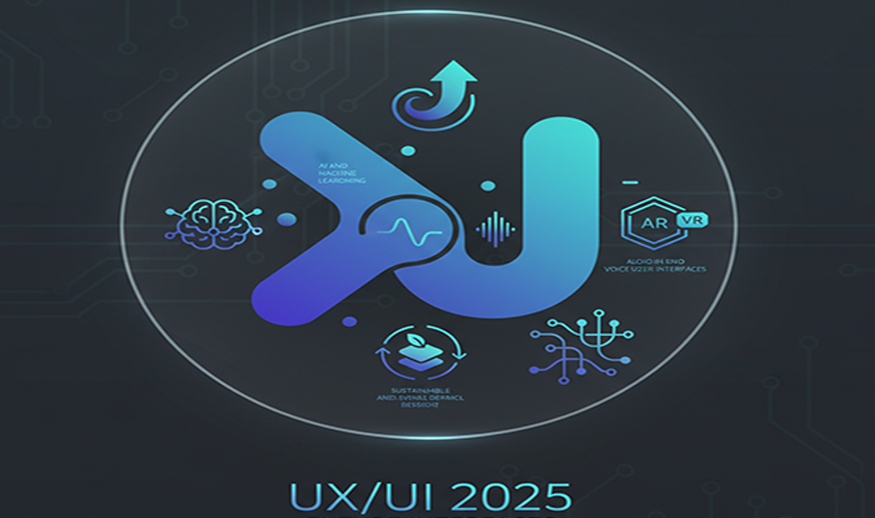
UX and UI Design Trends in 2025
UI and UX design trends in 2025 are shifting toward creating more engaging, personalized, and efficient digital experiences. The core focus is to blend technological advances like AI and immersive reality with ethical and sustainable design practices.
UX design trends
- Proactive user experience (PX) design: Moving beyond reacting to user actions, AI and machine learning will enable interfaces to anticipate user needs before they're explicitly stated. This is achieved through personalized recommendations, predictive interfaces, and anticipatory prompts based on user behavior.
- Ethical and sustainable design: A growing focus on user well-being and environmental responsibility is influencing UX. Designers will create less addictive, energy-efficient interfaces by using lightweight assets, dark mode to save battery life on OLED screens, and minimizing unnecessary data usage.
- Accessibility as a standard: With regulations like the European Accessibility Act (EAA), inclusive design is no longer an afterthought but a fundamental requirement. This includes ensuring interfaces are usable for people with disabilities through improved screen reader support, keyboard navigation, and high-contrast color schemes.
- Micro-interactions and emotional design: Small animations and feedback mechanisms will become more purposeful, creating emotional connections with users. These tiny moments add personality and provide subtle guidance, enhancing engagement and building trust.
- Evolution of the UX designer's role: As AI automates more routine design tasks, UX designers will need deeper expertise in research, strategy, and business thinking. Their focus will shift to strategic problem-solving, leveraging AI as a powerful tool rather than a replacement for human creativity.
UI design trends
- Modern skeuomorphism: After years of flat design, skeuomorphism is making a comeback with a modern twist. It blends subtle, tactile depth—like soft shadows and highlights—with clean layouts to make interfaces feel more tangible and engaging without sacrificing usability.
- Bento box grids: This modular layout arranges content into distinct, visually appealing compartments. Inspired by Japanese bento boxes, this design provides a clear hierarchy and makes it easier for users to digest large amounts of information.
- Expressive and interactive typography: Fonts are becoming more than just text—they are a visual element with personality. Variable fonts and kinetic typography add motion and flair, while oversized, bold typefaces make strong statements and capture attention.
- Immersive 3D and mixed reality: 3D elements will be interactive and used for storytelling, not just decoration. With advances in WebGL, AR, and VR, mixed reality experiences will blend digital content with the physical world, creating immersive experiences for e-commerce, education, and more.
- Dynamic and transparent layers (Glassmorphism 2.0): Transparent, frosted glass effects are being used to create depth and visual hierarchy. This style is particularly effective in dark mode, adding a polished, futuristic look without overwhelming the user.
- Subtle dark modes and bold contrast: While dark mode has become a standard feature, variations like "low light" or subtle dark palettes are emerging to be less jarring on the eyes. Alongside this, designers are using high-contrast, neon color schemes to make designs stand out.
